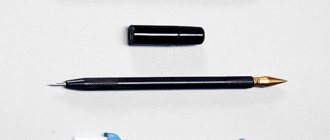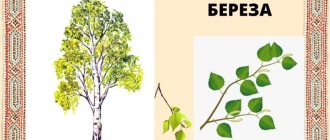The main goal pursued by plot pictures for composing a short story is the desire to develop the speech and thinking of children. Looking at the picture, the guys try to describe what is depicted on it, trying to compile a single, logically coherent story. Unfortunately, the speech of today's young people is far from perfect. Children and teenagers read and communicate little. Therefore, family, teachers, and all adults surrounding the child should pay attention to the development of correct literary speech. There are a huge number of ways to do this.
How can they be used?
One of them, already mentioned, is pictures for making a short story. On our website you will find story pictures for children. It is extremely important that the images are subordinated to a single theme, which means that the child, looking at them, will be able to compose a coherent message or play role-playing games for preschoolers. It is not for nothing that when teaching a foreign language, students are asked to describe a picture, come up with a dialogue according to the presented situation, and create role-playing games. This technique is also applicable when teaching the native language in a kindergarten or aesthetic center. You can download illustrations for writing a short story and print them for work.
The technique for developing speech based on pictures for composing a short story is simple. We advise parents to play role-playing games with their baby, lay out illustrations in front of him, and come up with a story together, a story in which the baby’s family or friends will be involved. Make sure that when describing, the child does not jump from one action or object to another, but expresses his thoughts consistently and logically. Having conducted such a lesson once, return to the worked picture after a while: ask the child if he remembers the story he compiled, what details he did not take into account, what he could add. A series of plot pictures for composing a short story are good for lessons on speech development in primary school, in native or foreign language lessons. Descriptions of illustrations, role-playing games, and a story based on them can be a good basis for creative work. Usually children respond with pleasure to such tasks, since children's imagination has not yet taken root, its flight is free and unhindered.
The method of working with pictures for children will require attention and regular practice from parents. It is the family that should be interested in the development of the baby. They should help him create a story, role-playing games for preschoolers, and then discuss them together.
A series of pictures for kindergarten or home use for children are focused on different topics. For example, you can compose a story on the topic “Family”, “Seasons”, “Forest”, “Home”, etc. The methodology for developing speech for children involves comprehensive coverage of topics on which a story can be compiled. The technique also involves the use of games for kindergarten, which will contain illustrations or a story on the chosen topic. As a result of a series of such activities, children begin to speak much more coherently, logically, and a single thread can be traced in their speech.
Teaching children with special needs stories using pictures
Experience as a kindergarten teacher. Teaching children with special needs to write stories based on pictures.
The formation of coherent speech in children with ODD is one of the most important tasks of speech therapy work with preschoolers.
This is necessary both for the most complete overcoming of systemic speech underdevelopment, and for preparing children for upcoming schooling. Children with ODD are characterized by a lack of independence in composing stories, violations of the logical sequence of presentation, difficulties in the lexical and grammatical structuring of statements, poverty of speech and language means, and semantic omissions. Thus, when working with children with special needs, auxiliary means are needed to facilitate and guide the process of development of a detailed semantic statement in the child. One of these means is visibility, in which a speech act occurs. The importance of this factor was noted by S.L. Rubinshtein, L.V. Elkonin, A.M. Leushina. The second auxiliary tool will be the modeling of the utterance plan, the importance of which has been repeatedly emphasized by teachers V.K. Vorobyova and V.P. Glukhov. L.S. Vygotsky noted the importance of sequential placement of all specific elements of the utterance in the preliminary work, as well as the fact that each link of the utterance should be replaced in time by the next one. Based on this, to form and activate coherent speech of preschoolers with SEN, along with traditional methods and techniques, I use modeling tools (diagrams, pictograms, subject pictures). Visual modeling tools are used in teaching preschoolers: • retelling, • compiling a descriptive story about individual objects, • compiling stories based on a series of paintings, plot and landscape paintings, • storytelling with elements of creativity. Types of activities with painting material that I use in my work. 1. Compilation of stories based on a series of plot paintings.
When working on a series of katins, children develop an idea of the basic principles of constructing a coherent statement: a sequential presentation of events that occurred, reflection of cause-and-effect relationships, determination of the main idea and the choice of linguistic means necessary for composing a story.
I used the following techniques for working on a series of narrative paintings: • Establishing the sequence of a series of paintings. • Selection from several pictures of those that illustrate the story read. • Restoring the sequence of events from memory (the story was read earlier, children must remember the events of the story and arrange the pictures in sequence). • Determining the missing picture (it is necessary to lay out the pictures except one; children must guess what is missing and tell them; only then the missing picture is laid out). • Find the extra picture. • Unraveling two storylines about one main character. • Selection of individual subject images to the plot picture. • Use of semantic absurdities (find a discrepancy between the text of the story and the pictures). Children also identified the main idea in each picture from the series and depicted it in the form of a pictogram (schematic drawing). Thus, a graphic outline of the story is drawn up. 2. Compiling a story based on plot pictures.
To compose stories, I use multi-figure paintings depicting several groups of characters or several scenes within a general plot that is well known to children (“We are on duty”, “Mothers and Daughters”, “Family”, “Games on the playground”, “Winter fun” ").
But in the classroom you should not limit yourself only to paintings intended for preschoolers. Children should also be offered genre painting that can excite the child and evoke a desire to discuss what he saw (“Arrived on vacation,” “Deuce Again” by F.P. Reshetnikov, “Ivan the Tsarevich on the Gray Wolf,” “Three Heroes,” “Alyonushka” by V. M. Vasnetsova, “Morning in a pine forest” by I. I. Shishkin). It is necessary for the child to see the features of the composition, the color palette of the picture, and be able to express his attitude towards what is depicted in the picture; when describing a genre painting, I felt the artist’s skill and his mood. When analyzing a picture, you need to pay attention to the construction of the story. Cards-symbols are used as a plan when composing stories based on the painting: • Question mark (name of the painting). • A schematic representation of a forest and a city indicates the location of the action. • Cards depicting seasons and parts of the day - indicate the time of action. • Card with arrows – indicate the composition of the painting (foreground, central part, background of the painting). • Schematic representation of a person and an animal - the characters depicted in the picture. • Their clothes. • Emoticons with various emotions – the mood and character of the characters. • Rainbow – color palette. • Heart symbol (children tell how the picture makes them feel). 3. Description of the landscape painting.
When analyzing a picture using symbols, children learn an approximate scheme of sequential description: name the season, list landscape objects in the sequence determined by their spatial location, describe the depicted objects, express their attitude to the picture (symbols: time of year, parts of the day, weather, composition, sign words, figurative expressions, color palette, heart). Requirements for the painting • Realistic image. • The picture must be highly artistic • Accessibility of content and image (absence of many details, strong reduction and obscuring of objects, excessive shading, incompleteness of the drawing)
Stages of work on composing stories based on the picture.
I. Preparatory work. The importance of preparatory work is great: the more thoroughly the preparation for the story is carried out, the less effort will be expended in composing the story, the better the texts themselves will turn out. Types of preparatory work: 1. Review.
Goals: to draw attention to the picture;
promote the development of visual perception. The effectiveness of this type of activity increases many times over when the children themselves comment on what they see. The teacher should fade into the background and intervene in the situation only if there is a need to clarify the names of objects and phenomena, to attract children's attention to the details of the picture that remain outside the discussion area; and also if the information that children exchange among themselves is incorrect. 2. Conversation based on the picture.
Goals: to help the child analyze the plot;
activate children's knowledge about the environment. The effectiveness of this type of work increases in that case. If you manage to create an impression on the child. That his opinion on each issue is interesting to the teacher. To build a productive conversation, you need to include the following types of questions: Questions aimed at: • analyzing the plot of the picture; • replenishment of the stock of ideas about certain objects and phenomena associated with a given picture; • creating an incentive for fantasy; 3. Reading fiction about the characters and objects that are in the picture.
Goals: to enrich children’s speech with literary speech patterns;
replenish children's knowledge about the objects and phenomena depicted in the picture. The effectiveness of this type of work increases if the teacher correlates speech literary samples with the picture. 4. Vocabulary work.
Goal: to enrich and activate children's vocabulary.
* Naming the objects depicted in the picture and explaining their purpose; * Construction of antonymic pairs (game “On the contrary”); * Construction of synonymous series; * Selection of related words that can be used to describe the picture (with an explanation of the meaning of the word in some cases). 5. Various games.
Games for focusing attention.
Goals: develop visual perception. Visual memory and visual attention, activate the dictionary - “Who is attentive” - Children one by one finish the sentence started by the speech therapist with the right word based on the meaning of the picture, name the details of the picture; - “Find the object.” It takes place in the form of a competition. Who can name more living objects, inanimate objects; - “Who will see more?” The child names objects depicted in the picture of a certain color, purpose, made from one material or another. — “Classifications”; Games to establish connections between objects. Goals: to teach children to find connections between objects, determine cause-and-effect relationships, and activate their vocabulary. - “What’s with what?”; — “Associative rows or circles”; I connect two objects with a line and ask him to tell how the objects he connected are connected. Children must remember what actions the different characters perform. You can use a schematic representation of action words. It would be very effective for children to act out in pantomime the actions of the characters in the picture, followed by verbalization. - “Bring the picture to life.” I invite the children to close their eyes and imagine that they are in the picture. What do you hear? (showing the “ear” symbol). “Walk” through the picture, “touch” the objects that come your way. How did you feel? (showing the “hand” symbol). Inhale the smell. What smells did you smell? (showing the symbol “nose”). Taste it. What taste sensations did you get? (showing the mouth-tongue symbol). Sensory games. — “Sensory piggy bank.” Tell me, what item? What else is the same? Children come up with metaphors and comparisons based on models. - “It was - it will be” The child chooses any character in the picture. Think about what he did before (before appearing in the picture), what he will do later; - "I am different". Choose a hero, tell him what mood (state) he is in. Tell us how he sees objects or events in this state. Has his mood changed now? How he now sees his surroundings. - “Color it the same way”; Language games. - “Say kindly”; - “I - We” - plural formation; - "Actions"; - “Poets” - selection of rhymes; — “Say the word” II. Reproductive type of storytelling (recreating, using support) 1. Descriptive stories. • Description of the item according to the sample; • Description of the subject according to the speech therapist: • Descriptive story according to the diagram; • Descriptive story based on sensory symbols; • Descriptive story using a mnemonic table; • Descriptive stories based on color symbols. 2. Comparative and descriptive stories. • Comparative description by analogy. • Comparative description of the issues; • Comparative description according to the scheme; 3. Description of the painting • using traditional methods. • according to the TRIZ system; • regarding speech therapist questions; • according to plan; • partial description of the picture; • using indicative diagrams; • using schematically depicted parts; 4. Description of the dynamic plot of the picture Compiling a story: • using key words; • Similarly; • based on a plot picture and a poem; • based on sentences made up of supporting words; • according to the cartographic scheme (methodology of V.K. Vorobyova) III. A creative way of storytelling. Coming up with: • the beginning of the story; • end of the story; • a story on behalf of some living object, in the first person; • a story on behalf of an inanimate object (revitalization of an inanimate object); • inventing a fairy tale (cantomination); • coming up with a story on a topic. • similarly, a story is compiled based on a proverb and a picture. When working with stories, you must follow some rules: 1. Never answer your own question. Be patient, and you will wait for your children to answer it. You only need to help with one more question or two. The number of questions is proportional to the skill of the speech therapist. 2. Never ask a question that can be answered “yes” or “no.” It does not make sense. 3. Before class, carefully look at the notes again. Questions about the painting should be concise and precise. 4. If the story didn’t work out or turned out with difficulty, smile, because it’s great, because success is ahead. General requirements for organizing work with a picture: 1. It is recommended to carry out work on teaching children to tell stories based on a picture, starting from the 2nd junior group of kindergarten. 2. When selecting a plot, it is necessary to take into account the number of objects drawn: the younger the children, the fewer objects should be depicted in the picture. 3. After the first game, the picture is left in the group for the entire duration of classes with it (two to three weeks) and is constantly in the children’s field of view. 4. Games can be played with a subgroup or individually. However, it is not necessary that all children go through every game with a given picture. 5. Each stage of work (series of games) should be considered as intermediate. The result of the stage: the child’s story using a specific mental technique. 6. The final story can be considered a preschooler’s detailed story, constructed by him independently with the help of learned techniques. Requirements for children's stories • accurate presentation of the plot; • independence; • imagery, appropriateness of using linguistic means (precise designation of actions); • the presence of connections between sentences and parts of the story; • expressiveness, ability to intonate, emphasizing the most significant words; • fluency of speech, phonetic clarity of each phrase • Interesting, understandable content that fosters a positive attitude towards the environment.
We recommend watching:
Development of communication skills of children 5-7 years old in theatrical activities Spiritual and moral education of preschool children Introducing preschool children 5-7 years old to Russian folk culture Lesson notes for preschoolers. Memorizing Serov's poem "Snowdrop"
Similar articles:
Methods of conducting physical education classes in kindergarten
Morning exercises in the preparatory group in a playful way
Teasing games for children 5-6 years old
Dance festival in kindergarten for children 5-7 years old. Scenario
Outdoor games as a means of harmonious development of a child
Developmental materials on the topic
Kindergarten
Pictures on different topics
Animal parts
Invite your child to match the heads and tails of various animals. Or let him have fun creating new wonder animals!
What you will need:
- Pictures of animals from magazines or inexpensive picture books
- Scissors
- Glue
- Sheets of thick paper
- Cut out pictures of different animals. Cut the pictures in half, dividing the head and tail.
- Place the picture halves with heads on the floor or table in front of the child. Take out one of the halves with a tail and let your child match the corresponding head to it.
- Have your child glue the whole animal onto a piece of paper. Continue until all animals have been restored.
Game options. Invite your child to deliberately mix up the heads and tails to create new funny animals!
Skills to be learned:
- Awareness of one's own body
- Classification skills
- Cognitive/Thinking Skills
- Development of fine motor skills
History in pictures
Everyone loves to look at family photos and remember life's precious moments. See if your child can put the photos in chronological order.
What you will need:
3 or 4 photos of a family vacation, birthday, or other special event
- Shuffle the photos and place them on the table.
- Ask your child to remember what happened first and choose the corresponding photo.
- Then ask him to choose a photo that shows what happened next. Continue until he has collected all the photos in chronological order.
- Ask your child to talk about what happened from start to finish, asking questions to help him remember in more detail.
Game options. Select several photographs representing different events and ask him to sort them by event. After this, you will need to arrange the photographs dedicated to the same event in chronological order.
Skills to be learned:
- Classification skills
- Cognitive/Thinking Skills
- Fine motor skills
- Preparing to Learn to Read
- Sequencing/Grouping
- Social interaction
A story based on a series of plot paintings according to plan
- Once upon a time... in such and such a place... such and such a character (name him)... did such and such in order to...
- Then he did (look at story 2)….
- Similarly, for each frame we encourage the child to talk about the character, his actions and goals.
- Summing up, conclusions. In the end it turned out..., so we can say that he (name the character) is so-and-so.
- Coming up with a title for the resulting story.
A series of pictures for storytelling. Theme "The Tale of the Hedgehog" based on the story by V. Suteev
(Image is clickable and opens in a new tab)
In the future, you can supplement the compiled story. It is important not to force the child to work according to plot pictures, but to include this activity in the game plot. You can invite your child to tell an interesting story to their favorite doll or bear. You can pre-select riddles or short poems that are consistent in theme with the plot of the series of paintings.
Another option for developing coherent speech is the use of paintings by famous artists. The page contains an album with a selection of paintings and descriptive texts.






